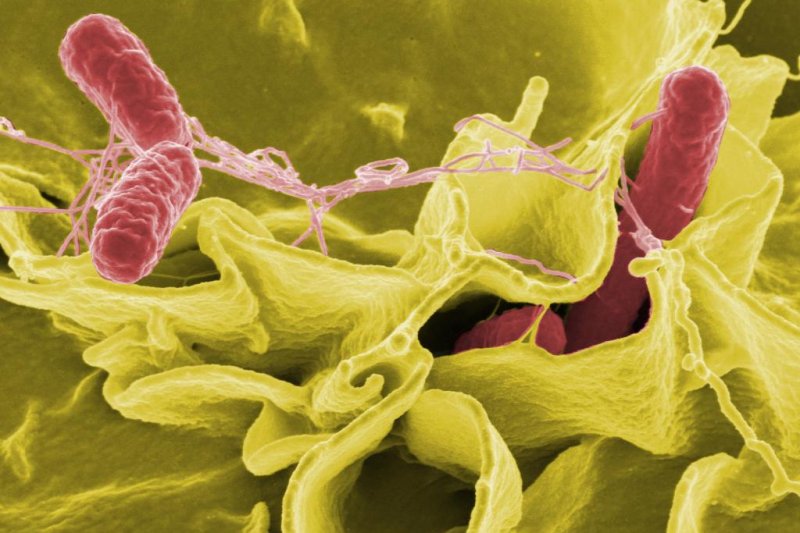In a new approach scientists say may reduce the reliance on antiboitics, researchers targeted specific molecules pathogens depend on to survive. Photo by the U.S. National Institutes of Health
IRVINE, Calif., Nov. 9 (UPI) -- A collaborative research team has developed a new method for treating salmonella infection and other food-borne illnesses.
Scientists from the University of California, Irvine and the Massachusetts Institute of Technology used a mouse model to test a treatment that enables the body to create new antibodies for attacking invasive microbes, a strategy they say provides a much-needed alternative to antibiotics.
"Enteric infections are difficult to treat, because antibiotics also disrupt the body's beneficial microbes that can provide a defense against these pathogens," researcher Manuela Raffatellu explained in a press release. "Our strategy is narrow-spectrum and augments the host's existing defenses."
In a study published in the Proceedings of the National Academy of Sciences, the team targeted a specific molecule salmonella and other bacteria use to absorb iron. By immunizing against this molecule, known as siderophore, researchers observed notable decreases in salmonella and other bacteria in their experiment.
The team decided to test the idea of blocking iron consumption in microbes after noting a human defense protein known as lipocalin 2 is capable of stealing siderophores from bacteria during an infection. However, that protein was found to be ineffective against certain types of siderophores, including the one used by salmonella.
During the experiment, scientists immunized mice twice before infecting them with salmonella 36 and 51. The antibodies were found to decease gut bacteria levels as well as prevent weight loss associated with the disease.
Researchers are confident that, with further development, the approach can be used to treat against a variety of pathogens.















